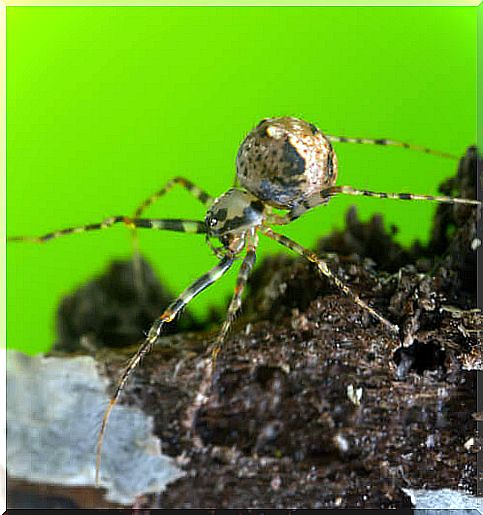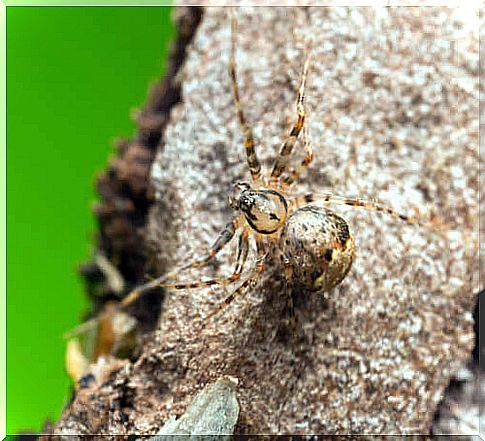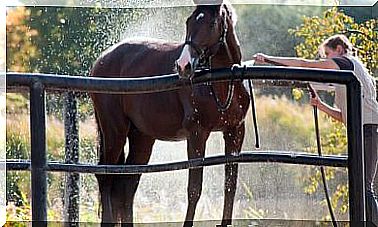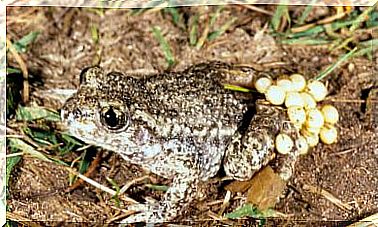Pirate Spiders: Survive By Hunting Other Spiders

We have often come across small, almost transparent cobwebs in the garden or elsewhere in our home. These fabulous works of art are used for arachnids to hunt insects. Weaving spider webs is the most effective strategy for spiders to get food for themselves and their offspring, although those known as pirate spiders do not…
Spider webs are so effective that city weaving spiders are among the most successful animals in the struggle for survival in large metropolises. There are about 3,000 different species distributed in almost every city in the world.
Weaving a sticky, multiform and resistant spider’s web is a very sophisticated task. Fabric requires a series of precise maneuvers that not all spiders are able or willing to perform.
Also, why waste time and energy making a net of your own when you can invade another spider’s, steal its prey and devour its architect?
There is a clandestine group known as the pirate spiders that have adopted this sinister method of obtaining food. In this way, naturally, their hunting strategies were ranked as some of the most outstanding in the animal kingdom.
Why don’t pirate spiders spin their own webs?
Pirate spiders belong to the large-city weaving spiders, the same ones that weave the unmistakable circular webs that exist in almost any home. However, pirate spiders do not make webs. In fact, it was concluded that these spiders lost the ability to weave.
Despite not weaving their own webs, pirate spiders are still capable of producing silk. With this silk, they build bags for their eggs and to wrap their prey. However, pirate spiders are anatomically incompetent for this task.

The spinnerets are the silk-dispensing holes that spiders have. The number of spinnerets of pirate spiders is very small compared to the number of other weaving arachnids. This feature makes pirate spiders unable to make a web.
Therefore, pirate spiders invade other spiders’ webs by gently touching the threads to get the host’s attention. Once the host arachnid has gotten close enough, the pirate carries out her sinister plan.
It uses its huge forelegs to trap its prey. These paws have a series of stingers that they use to hold the host. The prey is enclosed within a kind of basket, much like a prison.
Once there, the pirate spider sinks its fangs into the other and injects it with a powerful poison that immobilizes it.
The Perfection of a Copycat Strategy
The habits of pirate spiders greatly intrigue specialists. Entomologists studying this type of arachnid infer that the strategy of touching the strands of the host spider’s web mimics the vibrations caused by a trapped insect. Hence the name of his family, Mimetidae, or imitator.
The host spider also reacts to vibrations from other types of invading spiders. Thus, a kind of dance is created in which the spiders approach and move away slowly, sending signals to each other. In general, the minor surrenders and leaves.
Pirate spiders send this kind of misleading signal to their hostess. They pretend to be small invaders reluctant to flee. This behavior attracts the resident, who gets closer and closer. When the hostess is within range, the pirate spider attacks.

Another aspect that causes admiration among specialists is the evolution of the pirate spider’s venom. This venom is extremely toxic to other spiders, including your own species. However, this does not happen with other animals.
When a spider is bitten by a pirate, it immediately stops moving. However, other insects, such as the fruit fly, struggle to free themselves for several minutes.
Hunters with a lovable side
There are many types of arachnids, and not all of them are dangerous. Some of these species can even be raised in a controlled environment within our homes, such as a terrarium.
Even if it doesn’t seem like it, spiders are not ruthless animals, especially when it comes to their own offspring. Maternal care is relatively common in most species. Some regurgitate food for their young, and others even allow them to feast on their corpse.
These types of maternal care have also been seen among pirate spiders. Pirates take care of and protect their eggs and offspring with special dedication. If the web moves or they sense danger, they create a ball with them and take them away from threats.
Currently, more than 160 species of pirate spiders have been formally classified. Furthermore, these spiders are found geographically on all continents, with the exception of Antarctica.









